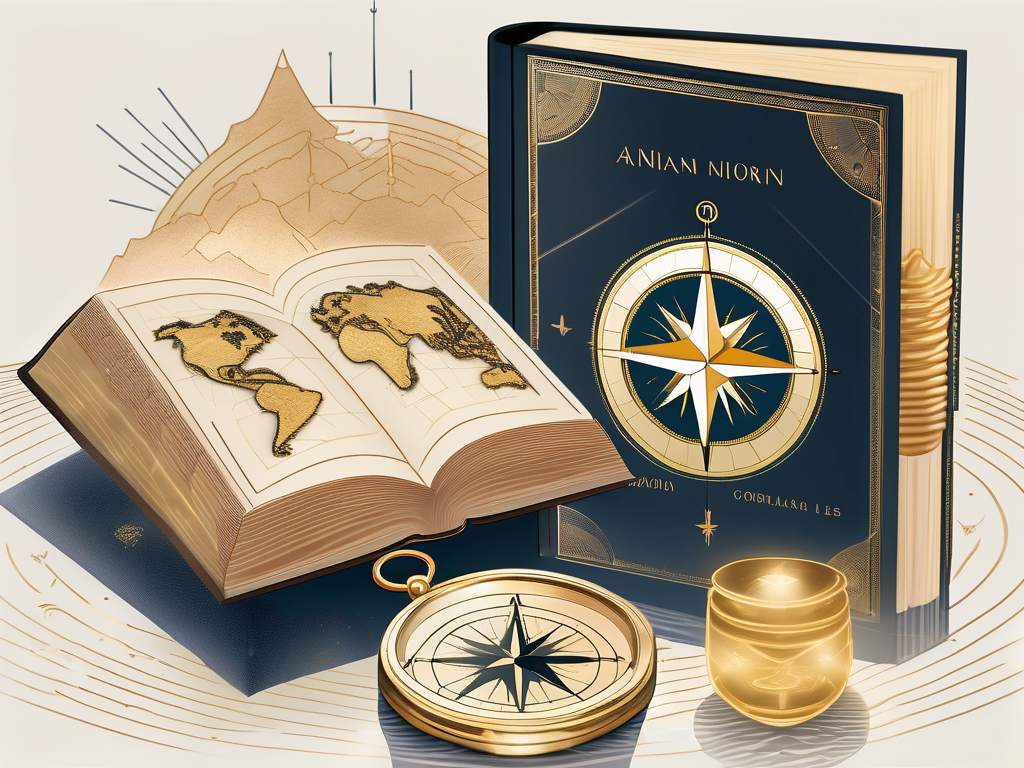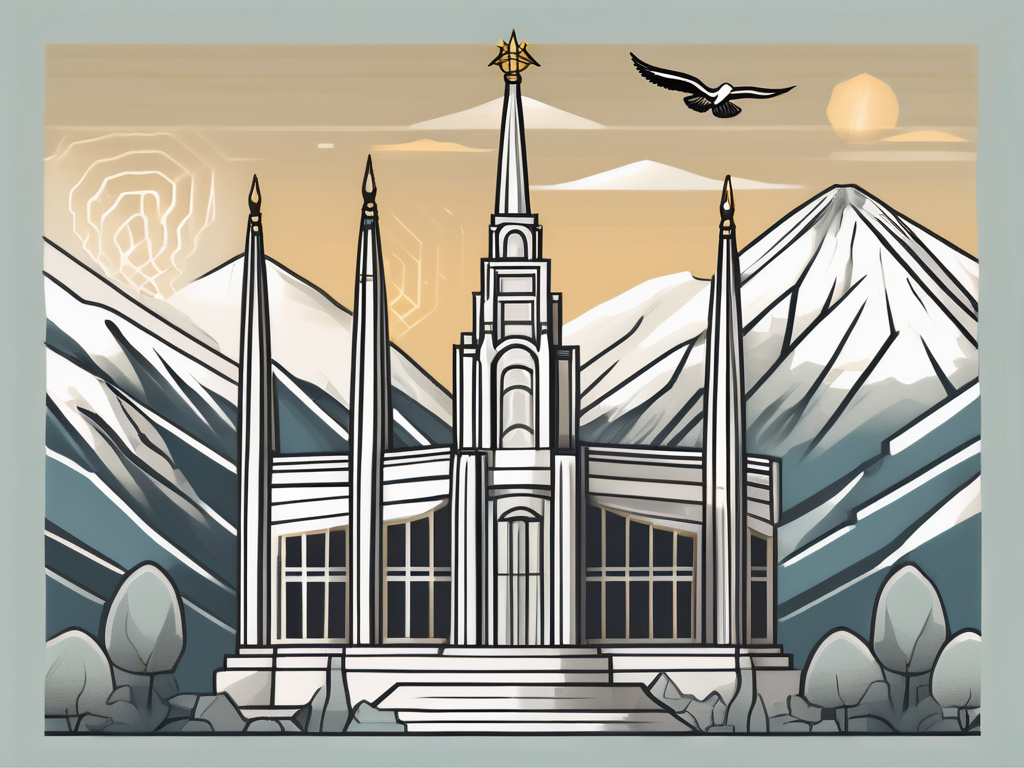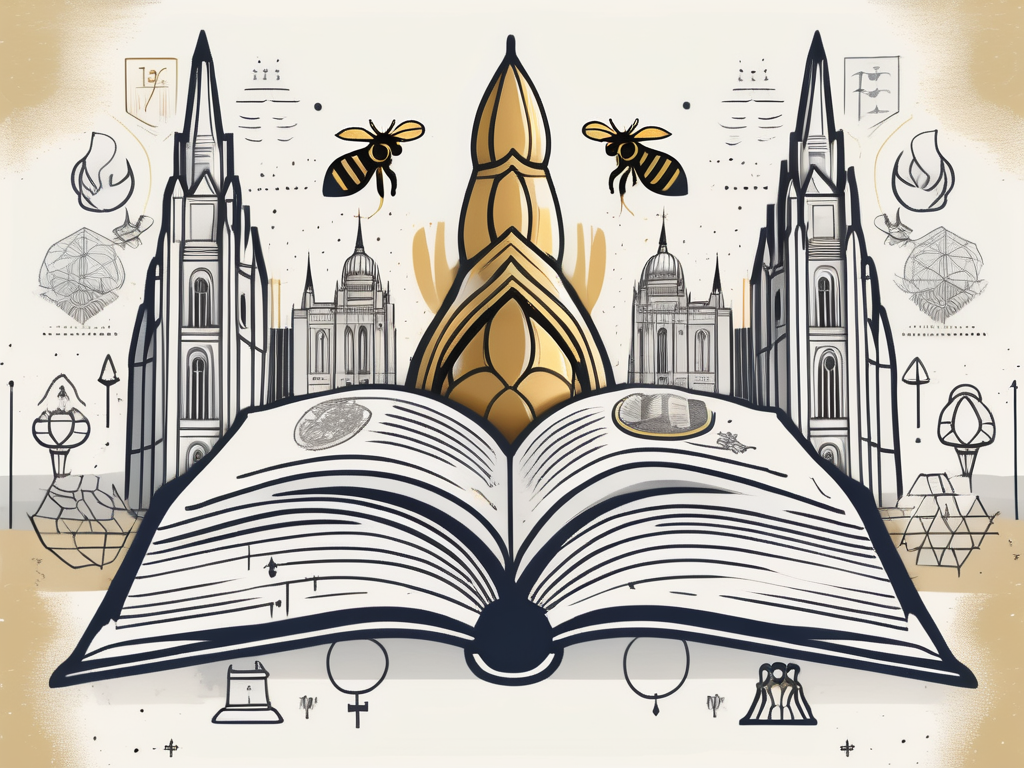The Book of Mormon and the Bible are two sacred texts that hold deep significance for millions of people around the world. While they both share a common ground as religious scriptures, they also have distinct origins, beliefs, and interpretations. In this article, we will delve into the origins of these texts, explore their core teachings, examine their structure and composition, analyze different translations, and discuss their roles in modern religion. Let’s embark on this enlightening journey together as we unravel the mysteries of the Book of Mormon and the Bible.
Understanding the Origins of the Book of Mormon and the Bible
Before we dive into the specifics, it is crucial to have a clear understanding of the origins of the Book of Mormon and the Bible. Let’s start by exploring how the Book of Mormon came to be.
The Genesis of the Book of Mormon
The Book of Mormon is a sacred text of The Church of Jesus Christ of Latter-day Saints, also known as the LDS Church or the Mormon Church. It was first published in 1830 by Joseph Smith, Jr., who claimed to have translated the ancient plates upon which the book is based. According to Smith, an angel named Moroni directed him to these plates, which were buried in a hill in upstate New York.
Joseph Smith’s account of the translation process is a fascinating one. He described using a seer stone, which he placed in a hat, to receive divine revelations and translate the ancient language found on the plates. Smith would dictate the words he saw to his scribes, who would then transcribe them into writing. This process continued until the entire Book of Mormon was completed.
The Book of Mormon tells the story of ancient inhabitants of the Americas and the teachings of Jesus Christ during his ministry there. It is considered by adherents of the LDS Church to be an additional witness of Jesus Christ, alongside the Bible. Its teachings include principles of faith, repentance, baptism, and the importance of enduring to the end.
The Birth of the Bible
In contrast, the Bible has a much longer history, spanning thousands of years. It is a compilation of writings by various authors, including prophets, apostles, and scholars, who recorded their religious experiences and understanding of God’s will. The Bible is divided into two main sections: the Old Testament, which contains religious texts from ancient Hebrew scriptures, and the New Testament, which focuses on the life, teachings, death, and resurrection of Jesus Christ.
The process of how the Bible came to be is a complex and intricate one. The Old Testament, for example, consists of numerous books that were written by different authors over a span of centuries. These books were later compiled and recognized as sacred texts by the Jewish community. The New Testament, on the other hand, was written by various apostles and disciples of Jesus Christ, who sought to document his life, teachings, and the establishment of the early Christian church.
Unlike the Book of Mormon, the Bible was not revealed to a single individual but rather formed over centuries of divine inspiration and human authorship. It encompasses a wide range of literary genres, including historical accounts, poetry, prophecy, and letters. Each book within the Bible offers a unique perspective on the religious beliefs, practices, and experiences of the people who lived during those times.
Core Beliefs and Teachings
Now that we have a foundational understanding of their origins, let’s explore the core beliefs and teachings found within the Book of Mormon and the Bible.
The Book of Mormon, a sacred text of the Latter-day Saint movement, emphasizes the importance of faith in Jesus Christ and the need for repentance. It teaches that through Christ’s atonement, all humanity has the opportunity to be saved and live with God eternally. The book also contains the teachings of various prophets, including Nephi, Alma, and Mormon, who provide guidance on moral living, family values, and the consequences of disobedience.
Furthermore, the Book of Mormon recounts the appearance of the resurrected Jesus Christ to the ancient inhabitants of the Americas. This powerful event reinforces the belief in his divinity and role as the Savior of humanity. The Book of Mormon serves as a testament to the divine mission of Jesus Christ and his universal message of love and redemption.
Fundamental Teachings of the Book of Mormon
One of the fundamental teachings of the Book of Mormon is the importance of faith. It teaches that faith in Jesus Christ is not just a mere belief, but an active trust and reliance on Him. This faith leads individuals to repentance, a process of turning away from sin and seeking forgiveness through the mercy of Jesus Christ.
Another key teaching found in the Book of Mormon is the concept of agency, or the ability to choose between good and evil. It emphasizes that individuals have the freedom to make choices and that these choices have consequences. The book teaches that making righteous choices leads to happiness and eternal life, while choosing sin leads to misery and separation from God.
In addition, the Book of Mormon teaches the importance of family and the central role it plays in God’s plan. It provides guidance on building strong family relationships, nurturing children in faith, and creating a loving and supportive environment. The book also emphasizes the eternal nature of families and the belief that families can be together forever through the blessings of the temple.
Central Doctrines of the Bible
The Bible, a collection of sacred texts in Christianity, shares many central doctrines with the Book of Mormon. Both texts believe in the existence of one true God, the importance of loving one another, and the concept of salvation through faith.
However, due to its longer history and diverse authorship, the Bible encompasses a wider range of theological perspectives. It consists of two main sections: the Old Testament and the New Testament. The Old Testament contains the religious writings of ancient Israel, while the New Testament focuses on the life and teachings of Jesus Christ.
The New Testament, in particular, centers around the life and teachings of Jesus Christ, emphasizing his role as the Son of God who sacrificed himself for the redemption of mankind. It contains teachings on love, forgiveness, and the establishment of the Church. The New Testament also includes the letters of the apostles, providing guidance on various aspects of Christian living and the organization of the early Christian communities.
Overall, the Bible serves as a comprehensive guide for believers, providing moral and spiritual teachings that have shaped the lives of millions throughout history. It is a source of inspiration, comfort, and guidance for individuals seeking to deepen their relationship with God and live according to His will.
Structure and Composition
Turning our attention to the structure and composition of these sacred texts, we can gain insights into their organization and layout.
Understanding the structure and composition of religious texts is essential for comprehending their content and context. These texts, often revered as sacred and divine, have been meticulously organized and composed to convey profound messages and teachings to their readers.
The Layout of the Book of Mormon
The Book of Mormon, a significant religious text in the Latter-day Saint movement, is divided into several books, each named after the primary author or prophet who contributed to its content. These books include the books of Nephi, Jacob, Mosiah, Alma, Helaman, and many others. Each book offers unique perspectives, insights, and narratives that contribute to the overall message of the Book of Mormon.
Furthermore, the books within the Book of Mormon are further divided into chapters and verses, allowing for easy reference and study. This division into smaller units enables readers to navigate through specific passages and locate particular teachings or events. Whether it is the profound sermons of King Benjamin or the personal accounts of spiritual experiences by the Nephite prophets, the chapters and verses provide a comprehensive framework for readers to engage with the text.
It is important to note that while the Book of Mormon follows a chronological sequence, it occasionally interrupts the narrative with editorial comments. These comments, often attributed to the prophet Mormon, provide additional insights, explanations, and clarifications. This editorial intervention enhances the reader’s understanding of the text and offers a deeper appreciation for the complexities and nuances within the Book of Mormon.
The Organization of the Bible
The Bible, a collection of religious texts revered by Christians worldwide, is a remarkable compilation of diverse books with their own unique style, content, and authorship. It is divided into two main sections: the Old Testament and the New Testament.
The Old Testament consists of books written in Hebrew and is divided into several categories, including the Law (Torah), Historical Books, Wisdom Literature, Major Prophets, and Minor Prophets. Each category offers distinct perspectives on history, law, wisdom, and prophecy, providing readers with a comprehensive understanding of the Jewish faith and its development over time.
On the other hand, the New Testament primarily consists of writings in Greek and is divided into sections such as the Gospels, Epistles, and Revelation. The Gospels, including the books of Matthew, Mark, Luke, and John, present the life, teachings, and ministry of Jesus Christ. The Epistles, written by early Christian leaders such as Paul, Peter, and John, offer guidance, encouragement, and theological insights to the early Christian communities. The book of Revelation, attributed to the apostle John, presents apocalyptic visions and prophecies.
Both the Old and New Testaments are further divided into chapters and verses, allowing for easy reference and study. This division into smaller units facilitates in-depth exploration of specific passages, enabling readers to delve into the profound teachings, narratives, and prophecies contained within the Bible.
By understanding the organization and layout of the Bible, readers can navigate through its vast collection of books and engage with the diverse teachings and narratives that shape the Christian faith.
Interpretations and Translations
In examining different translations and interpretations of these texts, we can uncover variations that have emerged throughout history.
Variations in Book of Mormon Translations
Joseph Smith’s original translation of the Book of Mormon is known as the “1830 edition,” which reflects his interpretation of the ancient plates. Over time, subsequent editions of the Book of Mormon have been published, with minor changes in language and punctuation. Though these changes do not alter the core teachings, they have prompted discussions among scholars and believers.
Different Bible Translations and Their Impact
Unlike the Book of Mormon, which is primarily read by members of the LDS Church in a specific translation, the Bible has been translated into numerous languages and versions. Each translation carries its own distinct nuances, influenced by the translators’ interpretations and theological perspectives. Some versions prioritize literal accuracy, while others focus on readability or capturing the poetic beauty of the original text.
These different translations have led to variations in wording, sentence structure, and theological emphasis, allowing readers to approach the Bible from various perspectives and gain deeper insights into its teachings.
Role in Modern Religion
Lastly, let’s explore the significance of the Book of Mormon and the Bible in contemporary religious practices.
The Book of Mormon in Contemporary Mormonism
For members of the LDS Church, the Book of Mormon is not only a religious scripture but also a guide for everyday living. Its teachings, alongside those found in the Bible, form the foundation of their faith and provide insights into the nature of God, the purpose of life, and the principles of salvation. The Book of Mormon plays a central role in religious ceremonies, rituals, and worship services within the LDS Church.
The Bible’s Influence on Modern Christianity
Across various Christian denominations, the Bible remains a vital source of spiritual guidance and inspiration. It informs beliefs, shapes moral values, and serves as a reference for religious practices and doctrines. The stories, parables, and teachings found in the Bible continue to impact Christian communities worldwide, influencing their worldview, sense of community, and personal relationship with God.
As we conclude this exploration of the Book of Mormon and the Bible, we have uncovered their origins, core teachings, structure, translations, and roles in modern religion. Although both texts have unique qualities and histories, they share a common purpose: to inspire individuals to seek a deeper understanding of God and to live according to moral principles.
Whether you find solace in studying the Book of Mormon or derive spiritual nourishment from the Bible, these sacred texts offer guidance and wisdom for those seeking a path of faith, hope, and love.












